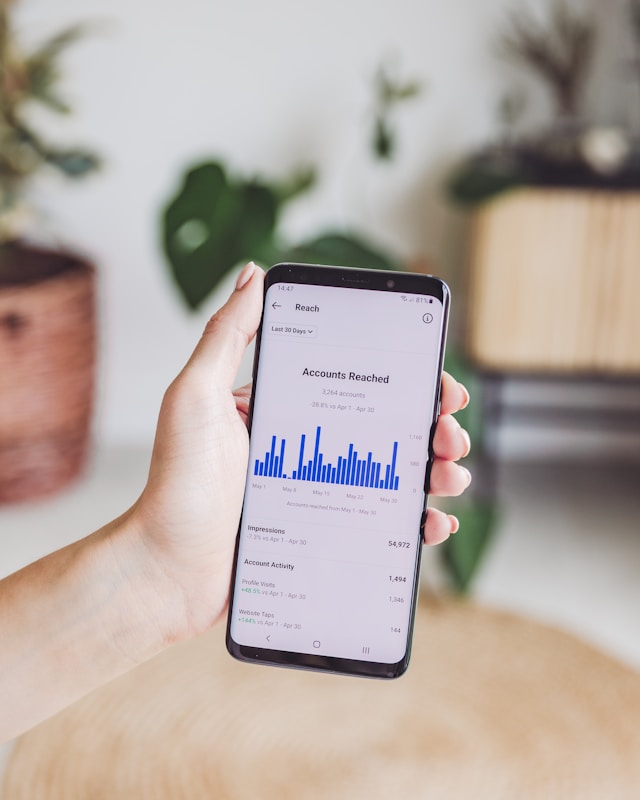Measuring SEO success goes far beyond tracking keyword rankings—it’s about understanding how your efforts translate into visibility, engagement, and real business results. By monitoring key metrics such as impressions, clicks, conversions, and bounce rates, you can get a clear picture of what’s working and where improvements are needed.
Tools like Google Analytics and Google Search Console provide the data you need to evaluate performance, calculate ROI, and demonstrate the value of SEO to stakeholders. With the right approach, tracking these metrics ensures your strategy stays on course and continues to deliver measurable growth.

What is the difference between an impression and a click?
In the context of SEO and search marketing, an impression and a click are two distinct but related metrics that measure user interaction with your website’s search listings. An impression occurs whenever a link to your website appears in a user’s search results. It signifies that your page was shown to a user for a specific search query. An impression does not necessarily mean the user clicked on your link or even saw it, as it could have appeared at the bottom of the page or out of their view.
A click, on the other hand, is recorded when a user actually clicks on your link and visits your website from the search results. This metric is a direct measure of your website’s visibility and relevance for a given search query. While a high number of impressions indicates that your website is being displayed for a lot of searches, a high number of clicks shows that your title and meta description are compelling enough to make a user visit your site. The ratio of clicks to impressions is known as the click-through rate (CTR), which is a key indicator of your search listing’s effectiveness.
How do I calculate the ROI of my SEO efforts?
Calculating the return on investment (ROI) of your SEO efforts is essential for proving its value to your business. The basic formula for ROI is: (Total Revenue from SEO – Total Cost of SEO) / Total Cost of SEO. To apply this, you first need to determine the total cost of your SEO campaign, which includes the consultant’s fees, content creation expenses, and any other associated costs.
Next, you need to track the total revenue generated from your organic search traffic. You can do this by setting up conversion tracking in Google Analytics to monitor sales or leads that originated from organic search. Once you have both figures, you can plug them into the formula to get a percentage that shows your return. For example, if your SEO costs were £5,000 and it generated £20,000 in revenue, your ROI would be 300%, a clear indicator of a successful campaign.


What are the most important metrics in Google Analytics for SEO?
Google Analytics is an invaluable tool for measuring the success of your SEO campaign by providing a wealth of data on user behaviour. One of the most important metrics is organic traffic, which shows the number of visitors who found your website through search engines. You should also monitor user engagement metrics such as average session duration and bounce rate, as these can tell you if your content is relevant and valuable to your visitors. A low bounce rate and a high session duration are good indicators of a positive user experience.
Another crucial metric is conversions, which tracks the number of users who complete a desired action, such as making a purchase or filling out a contact form. By segmenting your conversions by traffic source, you can see exactly how many of your leads or sales are coming from organic search. A good SEO strategy focuses not just on increasing traffic, but on increasing traffic that converts, and Google Analytics is the key tool for tracking this.
How do I use Google Search Console to track performance?
Google Search Console is a free and essential tool that gives you a direct line of communication with Google about your website’s performance. You should use it to monitor your search performance report, which shows which keywords are bringing you impressions and clicks, as well as your average position in the search results. This is crucial for understanding how your website is being found by users and for identifying new keyword opportunities.
Search Console also provides a coverage report that shows which pages on your site have been indexed by Google and highlights any indexing errors that need to be fixed. It is also the primary tool for checking for manual or algorithmic penalties and for submitting a disavow file for toxic backlinks. By regularly monitoring Search Console, you can stay on top of your website’s technical health and ensure that it is properly understood by Google.


What is a conversion, and how does it relate to SEO?
A conversion is any specific action that you want a user to take on your website that contributes to a business goal. This could be anything from a small, soft conversion like signing up for a newsletter to a hard conversion like making a purchase. SEO is ultimately a tool to drive conversions. The goal is not just to increase traffic, but to attract the right kind of traffic—people who are most likely to take that desired action.
By optimising your website for conversion-oriented keywords and ensuring a seamless user experience, you can significantly increase your conversion rate from organic traffic. For example, an SEO strategy might focus on attracting users who are at the transactional stage of their buying journey, which will lead to a higher conversion rate. Tracking conversions allows you to measure the true business impact of your SEO work and prove its value beyond just vanity metrics.
How do I measure the success of my link building efforts?
Measuring the success of your link building efforts goes beyond a simple count of the new links you’ve acquired. A good strategy focuses on the quality of the links and their impact on your website’s authority and traffic.
You should use an SEO tool to track your website’s Domain Authority (DA) or Domain Rating (DR), which are scores that predict how likely a website is to rank in the search results. An increase in this score is a strong indicator that your link building is working.You should also monitor your organic keyword rankings to see if your efforts are helping you climb the search results for your target terms. Lastly, check your referral traffic in Google Analytics to see if the new links are driving direct visitors to your site. A successful link building campaign will not only increase your website’s authority but will also provide a new source of qualified referral traffic.


What is a bounce rate, and what does it tell me?
Bounce rate is a metric that measures the percentage of visitors who land on your website and leave without navigating to any other pages. A high bounce rate could indicate that your content is not relevant to the user’s search query, the page is difficult to read, or the user experience is poor. A low bounce rate, conversely, suggests that your content is engaging and that visitors are finding what they are looking for and continuing to explore your site.
While a high bounce rate isn’t always a bad thing—for example, a user might find the answer to their question on a single blog post and then leave—it is an important metric to monitor, especially on your most important landing pages. By analysing pages with a high bounce rate, you can identify areas for improvement in your content, design, and internal linking structure.
How often should I review my SEO metrics?
The frequency of your SEO metric reviews depends on the size of your business and the intensity of your campaign. For most businesses, it is advisable to conduct a monthly review of your key metrics. This allows you to track month-over-month performance, identify trends, and make data-driven decisions. You can look at organic traffic, keyword rankings, and conversions to see what progress is being made.
A more in-depth quarterly or bi-annual review is also recommended. This is a chance to step back and assess the bigger picture. You can compare your performance to the same period in the previous year and evaluate the overall effectiveness of your long-term strategy. Regular reviews, both short-term and long-term, are crucial for ensuring your SEO efforts are on track and delivering a positive ROI.


What are some red flags that my SEO strategy is not working?
There are several red flags that can indicate that your SEO strategy is not working as planned. The most obvious one is a decline in organic traffic and keyword rankings. If your traffic is stagnant or dropping, it could mean your strategy is outdated or a competitor is outperforming you. Another red flag is an increase in your bounce rate and a decrease in user engagement, which might suggest that the traffic you are attracting is not relevant.
Other warnings include a lack of new backlinks or an increase in low-quality or spammy links pointing to your site. You should also be concerned if your SEO consultant cannot provide clear, transparent reports that show a positive trend in your key metrics. If you are not seeing any progress after a sustained period of effort, it may be time to reassess your strategy or find a new consultant.
How do I present my SEO results to my boss or client?
When presenting SEO results to a boss or client, you should focus on metrics that directly relate to their business goals, rather than getting bogged down in technical jargon. Start with an executive summary that clearly states the progress made and highlights the most significant achievements. Use visual aids like graphs and charts to show trends in organic traffic and conversions over time, as these are easy to understand.
Focus on demonstrating the return on investment (ROI). For example, you can show how the increase in organic traffic led to more leads and how those leads translated into sales. A good report tells a story: here’s where we started, here’s what we did, and here’s the positive impact it had on the business. By making the results tangible and relatable to their bottom line, you can effectively communicate the value of your work.


